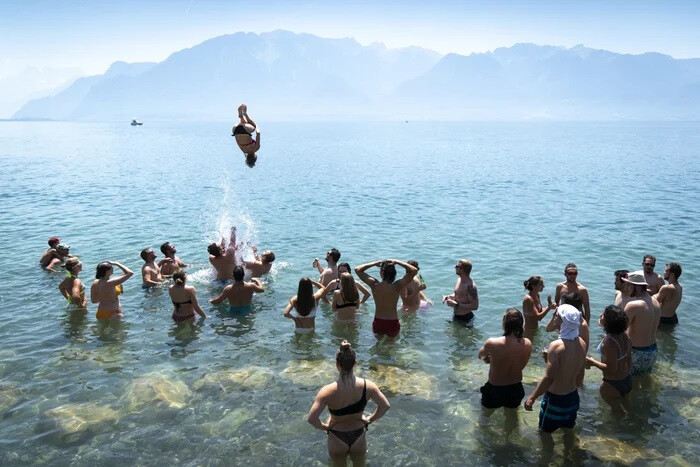
Geneva, Switzerland - In the heart of Geneva, where luxury boutiques overlook the shimmering expanse of Lake Geneva, a remarkable transformation is taking place. Once notorious for some of Europe's most polluted waters, Switzerland now boasts crystal-clear rivers and lakes, attracting swimmers and nature enthusiasts alike.
Decades ago, the scene was starkly different. In the 1960s, Swiss waterways were plagued by algal blooms, foam, and dead fish, rendering them hazardous to public health. Swimming was banned in many rivers, and raw sewage flowed directly into water bodies. Today, however, the transformation is palpable.
"It's just so fun," says René Rottenberg, a 75-year-old retired gynaecologist, who swims in Lake Geneva up to five times a week. "The place is beautiful." Rottenberg is a member of Les Givrés, a swimming club that braves the 8°C waters even in winter, highlighting the city's newfound aquatic allure.
This dramatic shift is the result of a concerted national effort. A pivotal moment came after a typhoid outbreak in Zermatt in 1963, which spurred the government to enact stringent wastewater treatment laws. By 1971, wastewater treatment was enshrined in Swiss law, leading to today's impressive statistic: 98% of the population is connected to advanced wastewater treatment plants, up from a mere 14% in 1965.
The Swiss government's commitment is evident in its substantial investment, spending an average of £174 per person on wastewater treatment in 2022, compared to approximately £90 in England and Wales. This investment has paid off, with Switzerland now leading the world in purifying micropollutants, including pharmaceuticals and other chemicals that conventional treatments often miss.
"Very high water quality is important to the population," explains Michael Mattle, head of wastewater technology at Holinger. "We take a lot of care not to pollute water on its way through Switzerland."
The Villette wastewater treatment plant in Geneva exemplifies this commitment. Using advanced filtration and activated charcoal, it removes 80% of micropollutants, setting a global standard. By 2040, Switzerland aims to have 140 such plants.
This pioneering work has drawn attention from neighboring countries, with wastewater experts from France, Italy, and Belgium visiting Swiss facilities to learn from their methods. The EU has also taken note, mandating micropollutant removal in wastewater treatment plants serving over 10,000 people by 2045.
Despite the high costs, the benefits are clear. "I think Swiss people are proud of their water," says Mattle. "It helps citizens enjoy a healthy and joyful life."
The transformation is evident on the shores of Lake Geneva, where people gather to swim, socialize, and enjoy the pristine waters. As Pascal Baudin, a member of Les Givrés, puts it, "We are united by a love of water. Here is the ideal medicine – cold water and friends."
Switzerland's journey from environmental crisis to aquatic paradise serves as a powerful example for other nations striving to clean their waterways, demonstrating that with commitment and investment, even the most polluted waters can be restored to their natural beauty.
[Copyright (c) Global Economic Times. All Rights Reserved.]






























